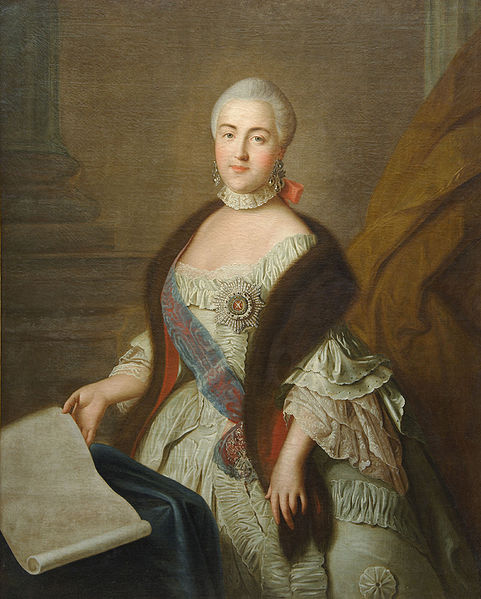CLIO Talks Back

Karen Offen
United States
Archive
- Jun 2011
- May 2011
- Apr 2011
- Mar 2011
- Feb 2011
- Jan 2011
- Dec 2010
- Nov 2010
- Oct 2010
- Sep 2010
- May 2010
- Apr 2010
- Mar 2010
- Feb 2010
- Jan 2010
- Nov 2009
- Oct 2009
- Aug 2009
- Jul 2009
- Jun 2009
- May 2009
- Apr 2009
- Mar 2009
- Feb 2009
- Jan 2009
- Dec 2008
- Nov 2008
- Oct 2008
- Sep 2008
- Aug 2008
- Jul 2008
- Jun 2008
- May 2008
- Apr 2008
I.M.O.W.'s debut blog, Clio Talks Back, will change the way you think about women throughout history! Be informed and transformed by Clio Talks Back, written by the museum's resident historian Karen Offen.
Inspired by Clio, the Greek muse of History, and the museum's global online exhibitions Economica and Women, Power and Politics, Karen takes readers on a journey through time and place where women have shaped and changed our world. You will build your repertoire of rare trivia and conversation starters and occasionally hear from guest bloggers including everyone from leading historians in the field to the historical women themselves.
Read the entries, post a comment, and be inspired to create your own legacies to transform our world.
How did Catherine II of Russia exhibit herself in her memoirs?
2009-01-13 00:00:00.000
Clio has been reading the new English translation (from French) of the memoirs of empress Catherine II of Russia (1729-1796; reigned 1762-1796). Her reflections on her early life (to 1759) provide a provocative transition between I.M.O.W.’s theme of “Women, Power, and Politics” and “Exhibiting You.”
Born as Princess Sophie Auguste Frederike von Anhalt-Zerbst, she was betrothed to the young Grand Duke Peter of Russia and went as a young teen, with her mother to live in the Russian court, where she received a new name, changed religions (from Lutheran to Greek Orthodox), and attempted to find a path through the incessant court intrigues that characterized the Russian court under the Empress Elizabeth. As the fiancée of the Grand Duke (the empress’s nephew and designated heir) and subsequently as Grand Duchess, Catherine lived essentially under house arrest, with all comings and goings subject to the approval of the empress. Every time she developed a trusting relationship with someone in her household, that person would be quickly dispatched from the court. She survived many illnesses, as well as the prescribed cures such as “bleeding,” presumably by leeches.
One of her few pleasures was horseback riding, which she often did in a male riding habit, seated astride (Empress Elizabeth thought that this contributed to Catherine’s inability to provide an heir). After nine years of marriage and several miscarriages, Catherine finally produced the much-awaited imperial heir (Paul) – no thanks to the collaboration of her husband. She was scarcely allowed to see this baby or either of her subsequent two children. Of her husband, she wrote: “If he had wanted to be loved, it would not have been difficult for me. I was naturally inclined toward and accustomed to fulfilling my duties, but for this I would have needed a husband endowed with common sense, and this man did not have any.” (36) She also understood that she might, one day, rule Russia in her own right.
Early on Catherine perceived that she would make history. When she was fifteen she penned a “Portrait of a Philosopher at Age Fifteen,” which she subsequently destroyed. But she continued as an avid reader and writer – exceptional in the Russian court of that day, and wrote both as a reporter and an autobiographer, taking her writing very seriously (though she deprecated it before the public). She wrote three different autobiographical memoirs in French, the first of which was not published until 1859. All three appeared in print after 1905. Fortunately the manuscripts had not been lost in the meantime. Throughout her life, when she was not writing, Catherine spent considerable time reading and learning from major works in French and German.
Catherine had a demonstrably fine intellect and a great deal of common sense, which comes through in her writing. According to her translators, Catherine “wrote on politics, Russian history, education, economics, and linguistics; she wrote thousands of letters, more than two dozen plays and operas, the first Russian children’s literature, memoirs, and journalism. Fluent in Russian, French, and German, she published a good deal in Russia and abroad, in French and in translations, often ‘anonmyously.’ Through her writings, Catherine promoted an enlightened Russia and its monarch together, and defended them against their many foreign critics, on a European historical, political, social, cultural, and intellectual stage.” She also wrote many works that circulated in manuscript among selected friends. She corresponded with the leading French writers, in particular Voltaire and Diderot, but also Baron Grimm, editor of the Correspondance européenne. As much as her choices of what to wear, or how her portraits should represent her, Catherine’s writings constituted another sort of public performance or exhibition.
As Catherine became more self-assured, aware of her talents, and versed in the strange maneuvering of Russian autocracy, her indomitable character emerged, and she began to stand up for herself, even to the empress Elizabeth – who died in late December 1761. By June 1762 Catherine had maneuvered into a position from which she and her supporters mounted a coup d’état against her incompetent husband Peter III (who was hustled away and subsequently executed) and Catherine took control of the government. Crowned in the Kremlin’s cathedral in September 1762, she proved to be a master of statecraft. In fact, the reign of Catherine II was enormously successful. In western Europe, where women’s rule was still controversial, advocates of women’s capacity to wield political power pointed to Catherine as a prime example of an enlightened ruler, along with her counterpart Maria Theresia of Austria. Already during her lifetime many called her “Catherine the Great.”
But following her sudden death in November 1796 – while writing – Catherine’s estranged and irascible son Paul sought revenge – it was widely know that his mother had hoped to skip over him and choose her favorite grandson Alexander as her heir. Among many other dramatic actions, Paul I exhumed and celebrated the body of his irresponsible and much-maligned father. He also revised the rules of succession – from a policy in which the reigning Russian monarch could choose a successor to a strict system of primogeniture that would henceforth give preference to male heirs.
Sources: The Memoirs of Catherine the Great. A new translation by Mark Cruse and Hilde Hoogenboom (New York: Modern Library, 2005).
John T. Alexander. Catherine the Great: Life and Legend (New York & Oxford: Oxford University Press, 1989).
Isabel de Madariaga. Russia in the Age of Catherine the Great (New Haven: Yale University Press, 1981).


